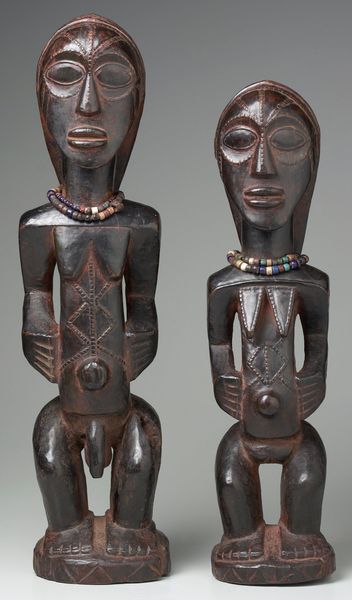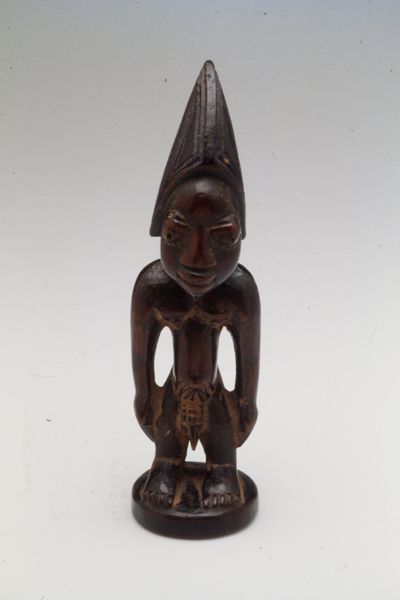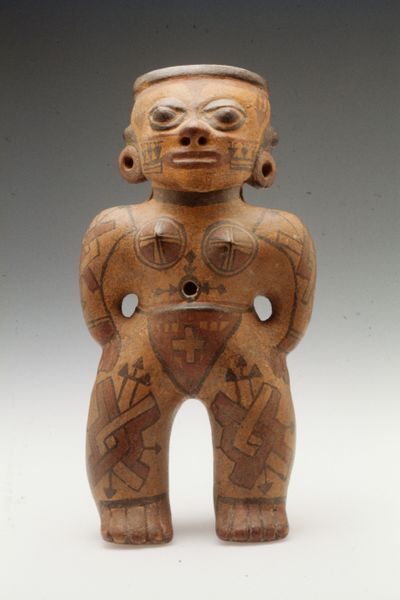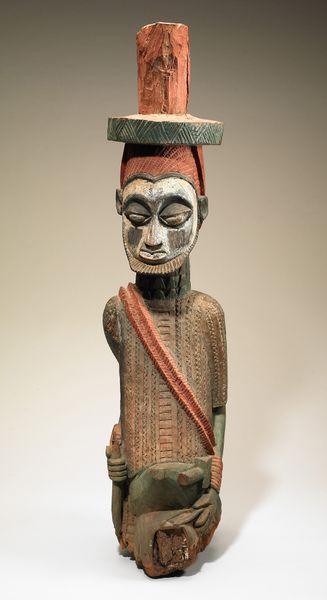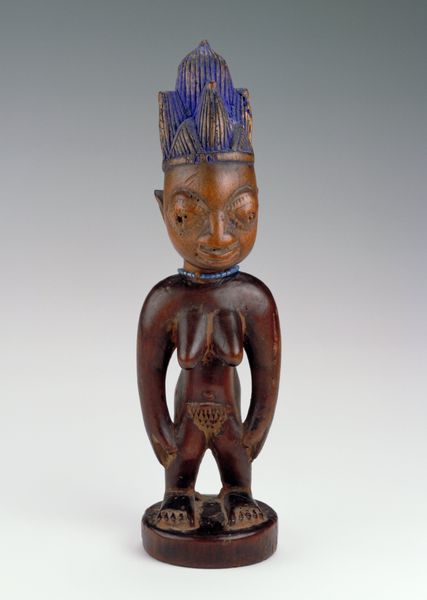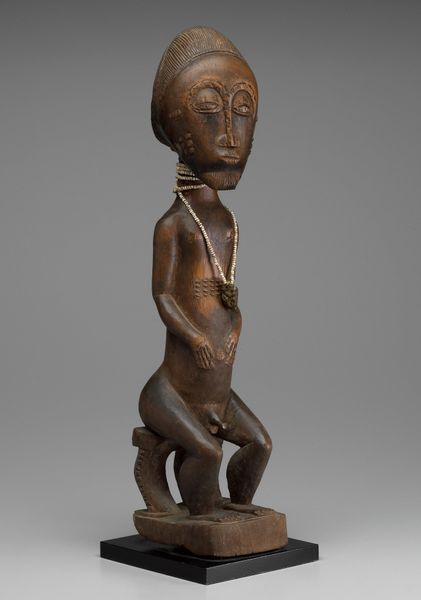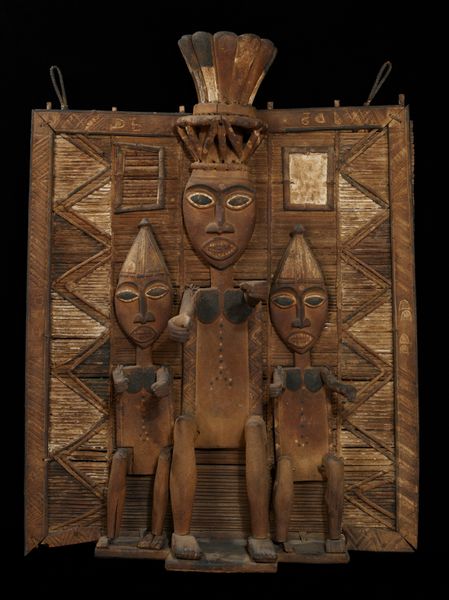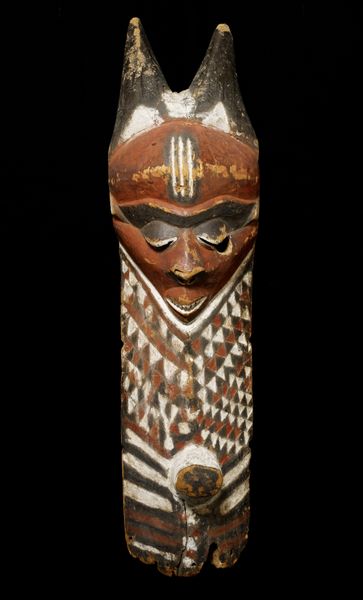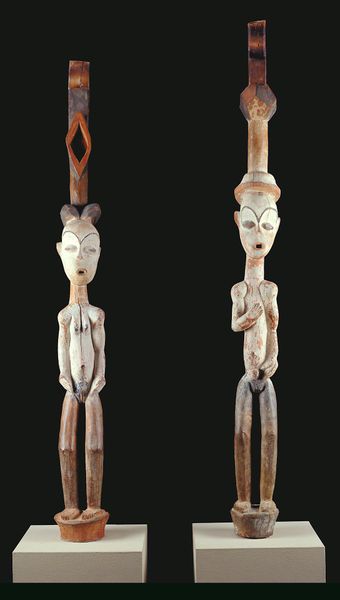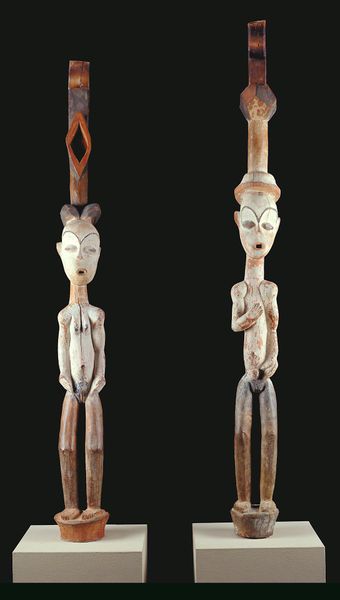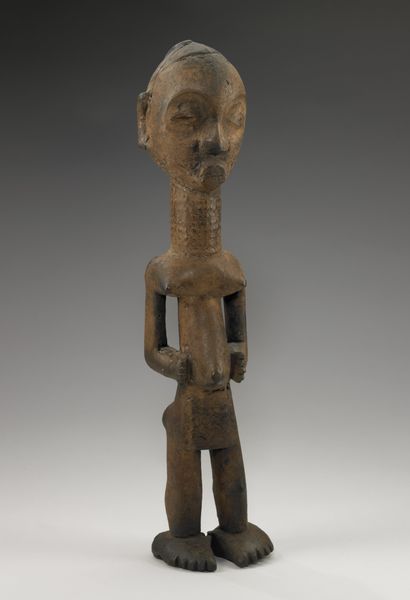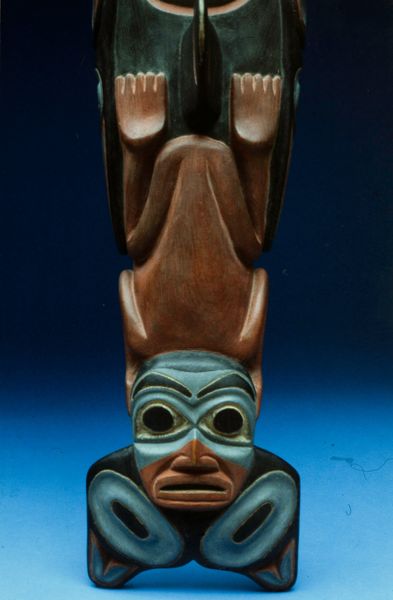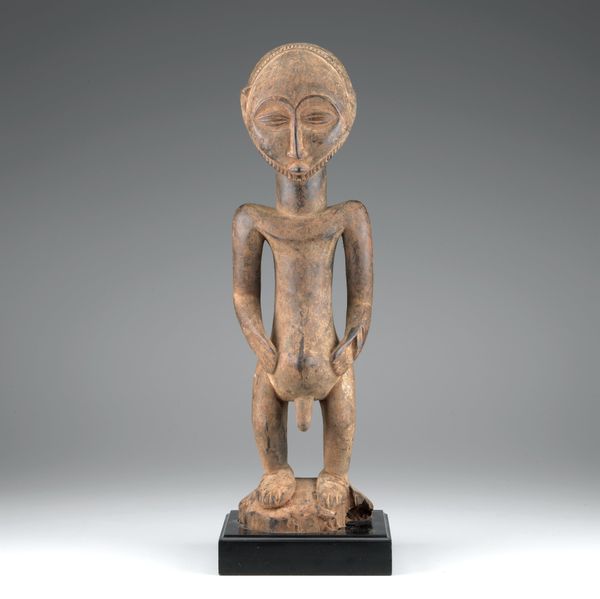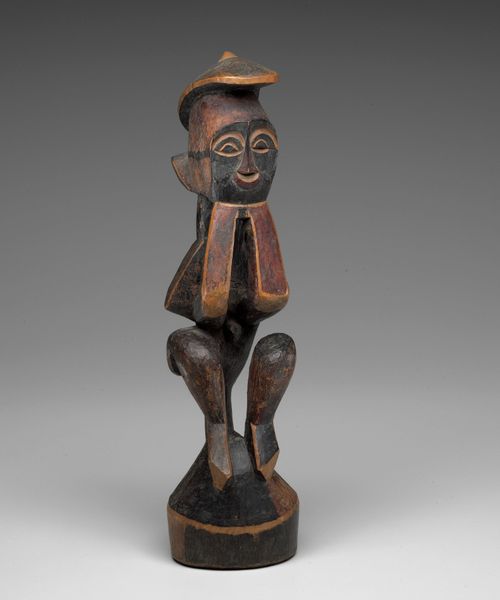
sculpture, wood
#
sculpture
#
sculptural image
#
figuration
#
sculpture
#
wood
Dimensions: 22 1/2 x 5 1/2 x 5 3/16 in. (57.2 x 14 x 13.2 cm)
Copyright: Public Domain
Editor: This striking sculpture, entitled "Male figure (one of a pair)", dates back to approximately 1890 and originates from the Tabwa people. Crafted from wood, its presence is both powerful and intimate. How do we interpret the public role of art like this? Curator: Looking at this sculpture through a historical lens, we can ask ourselves: how did colonial power structures influence the collection and display of objects like this "Male figure"? The figure's presentation—its nudity, the geometric scarification patterns—would have been viewed through a very specific, often problematic, lens by European collectors and, consequently, museums. Editor: That’s interesting. So, the very act of bringing it into a museum context changes its meaning? Curator: Precisely. These sculptures were originally integral to Tabwa ritual and belief systems. Removed from that context, they become objects of study, of exoticism, potentially reinforcing power imbalances. Consider also the impact of institutional narratives – how museums frame these objects shapes public understanding. Were these objects originally displayed to convey power and respect or some kind of subjugation? Editor: And the title itself, "Male figure (one of a pair)," feels so…clinical. It strips away any deeper meaning. Curator: Exactly! A key element to understanding their public role and politics, wouldn’t you agree? Do you think it's erotic or more about ancestral veneration and ritual? Editor: Hmmm, I suppose initially I was drawn to the... more overtly sexual characteristics of this wooden male sculpture, but you're making me aware of other facets. Thinking of scarification in terms of communicating status seems very important to its interpretation as art within society. Curator: Exactly! This has given us more to consider. We really are reflecting on museums’ crucial role in giving Indigenous artwork visibility.
Comments
minneapolisinstituteofart almost 2 years ago
⋮
Pairs of male and female figures are important and rare objects among the Tabwa. They represent the ancestors of a particular Tabwa lineage and were kept in a special shrine by the lineage chief to honor them. This pair is distinguished by their quality of carving, their elaborate hairdos, and the pattern of scarification represented on their bodies. Scarification patterns were an important expression of religious, social and aesthetic principles of the Tabwa, as well as many other traditional tribal people of Africa. These facial scarifications emphasize the middle of the forehead between the eyes because that is where the Tabwa consider the spiritual center of a human being to reside. The central scarification line down the middle of the torso of each figure likewise represents the essential line of balance that exists in the body as well as the world in which the person lives. The equilateral triangles that make up the other decorations on the body, as well as the decoration around the base of each figure, is a pattern known as balamwezi, a Tabwa word meaning "the rising of the new moon". The period between the old and new moon is one of darkness and transition. This the Tabwa feel is a most dangerous period for making decisions in one's life and calls to mind the need for people to carefully consider their actions and how they will effect family, tribal units and the world in general.
Join the conversation
Join millions of artists and users on Artera today and experience the ultimate creative platform.
